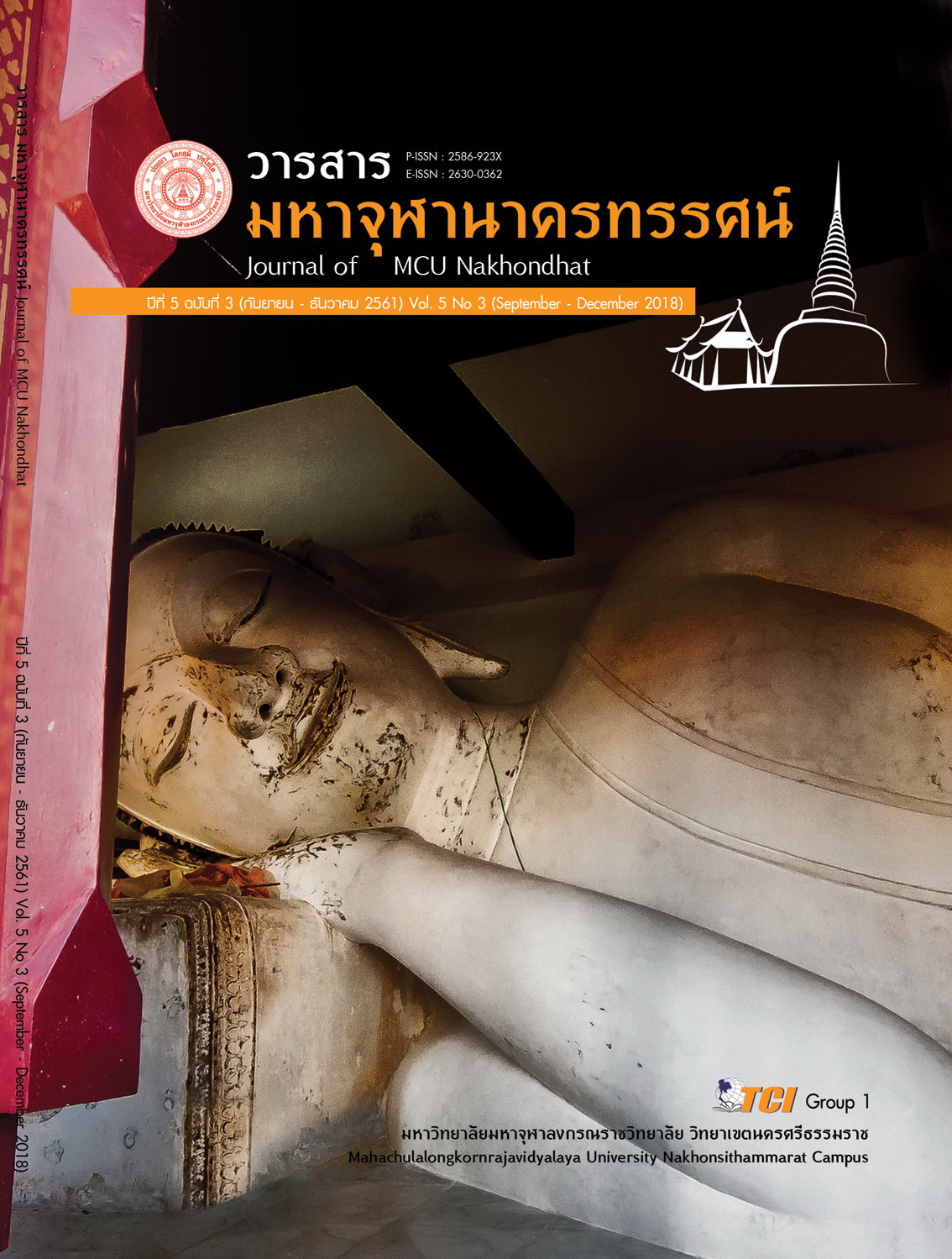THE ADMINISTRATION MODEL OF ENGINEERING ACCORDING TO THE BUDDHISM
Main Article Content
Abstract
The doctoral dissertation, entitled “The Administration Model of Engineering According to The Buddhism,” has three objectives: 1) to study current theories and concepts, as well as Buddhist teaching, related to the administration of engineering work, 2) to study problems and obstacles in the administration of engineering work, and 3) to propose a model for administering engineering work according to Buddhism. This research employs documentary research and in-dept interview.
The study showed that relevant theories for engineering administration include Administration Theory, PDCA cycle Management Method, Engineering Administration Theory, Human Resource Management Theory, Motivation theory. The problems associated with engineering management can be classified into five aspects: personnel, equipment, finance, management, and external factor. The applicable dhamma topics that can help solve these problems include Iddhipada 4 (basis for success), Sangahavatthu 4 (bases for social solidarity) and Brahmavihara 4 (holy abidings). An engineer does not have to adhere strictly to any particular dhamma topic, but he or she can apply some of these topics to the administrative situation at hands for management of oneself, work, and of the community surrounding the work. Promotion and development of engineering management. In order to integrate Buddhism in daily life to develop oneself, develop people. Develop work, develop social, and develop environmental. The principle in Buddhism is to integrate. Is Iddhipada 4, Sangahavatthu 4, Brahmavihara 4, Sikkha 3 and Agati 4, A model of applying Buddhism in engineering administration is proposed to be called “BACK MODEL,” which includes B for Buddhadhamma (application of Buddhist teaching), A for Area (prioritizing the area of the surrounding), C for Controlling (clear control of the system and organizational relations among the personnel), and K for Knowledge (the body of knowledge that the engineering entrepreneurs should know. The knowledge should include internal and external factors, thus enabling an organization to appreciate its weakness and strength.)
Article Details
References
ณรงค์ เหลืองบุตรนาค. ((ม.ป.พ: ม.ป.ป)). การบริหารงานก่อสร้าง หน้า 1.
พระพรหมคุณาภรณ์ (ป.อ.ปยุตฺโต). (2550). ธรรมนูญชีวิต ฉบับชาวบ้าน. กรุงเทพมหานคร: สถาบันบันลือธรรม.
พระพรหมคุณาภรณ์ (ป.อ.ปยุตฺโต). (2551). พจนานุกรมพุทธศาสตร์ฉบับประมวลศัพท์. พิมพ์ครั้งที่ 11/2. กรุงเทพมหานคร: บริษัท เอส อาร์ พริ้นติ้ง แมส โปรดักส์ จำกัด.
รณรงค์ กระจ่างยศ. (2558). การบริหารงานก่อสร้าง หน้า 1. กรุงเทพมหานคร: โฟร์เพซ.
วิสูตร จิระดำเกิง. (2552). การบริหารงานก่อสร้าง. กรุงเทพมหานคร: วรรณกวี.
สํานักงานคณะกรรมการกฤษฎีกา. (2542). พระราชบัญญัติวิศวกร พ.ศ. 2542 หน้า 1.
Ralph J. Smith. (Volume 94, Issue 2446). “The Engineers' Council for Professional Development Science”. 456.


